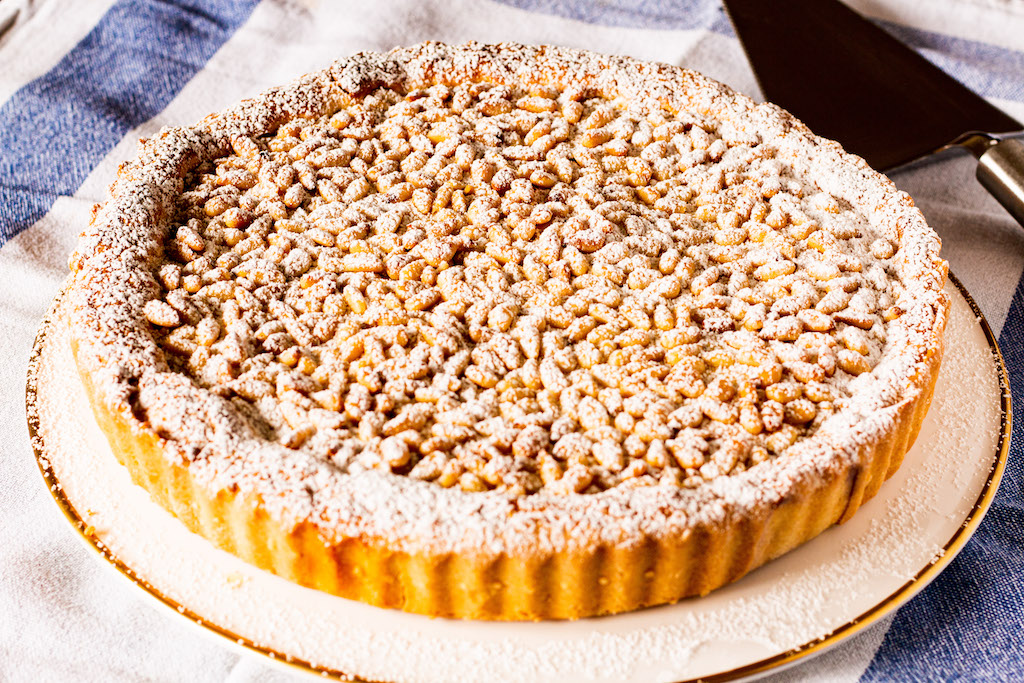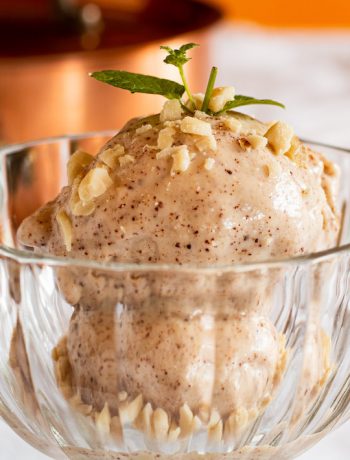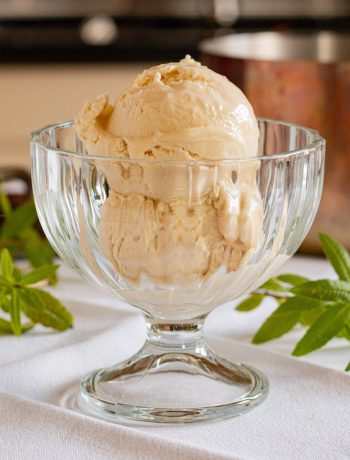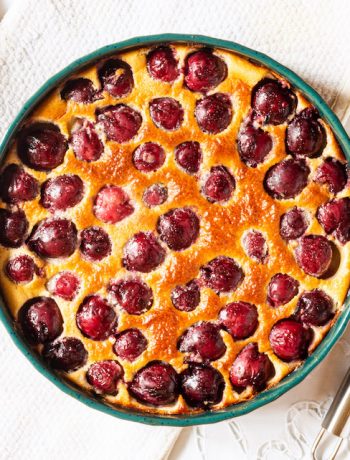Nobody has the faintest idea where torte della gonna (granny’s tart) comes from, but the one thing that can be certain is that it was not invented by anyone’s granny.
Appearing to come from Florence, the dish is often attributed to Florentine chef Guido Samorini. However, there is a reference in Pellegrino Artusi’s famous 1891 La scienza in cucina e l’arte di mangiar bene of a tart described as:
“… dessert with pine nuts and the pastry cream; a pleasant mess, a poor pastry.”
That sounds a lot like nonna’s tart, even if Artusi’s review of it is a little harsh.
This recipe is adapted from that of Venetian food writer and photographer Valeria Necchio. We have followed her custard recipe (with some added tips), and encased it in our usual paté sucre recipe. Rinsing the wine nuts is essential to stop them from burning.

Torta della nonna
Ingredients
- For paté sucre:
- 300g plain flour
- 1 tsp baking powder
- 112g icing sugar, sifted
- 150g cold unsalted butter, cubed (plus extra for greasing the tin)
- 1 large egg, plus 1 egg yolk
- Zest of 1 lemon
- For the custard filling:
- 5 large egg yolks
- 100g caster sugar
- 30g flour
- 600ml milk
- Peel of 1 lemon cut into strips
- Half a vanilla pod, seeds scraped
- To finish:
- 80 pine nuts, rinsed
- Icing sugar to dust
Instructions
To make the pastry, blitz the dry ingredients in a chilled food processor. Add the eggs and run the machine again to bring the pastry together. It may need a tiny dash of water depending on egg size. Divide the pastry into third and two-this amounts. Flatten a bit with a rolling in, wrap and chill for 1 hour.
Meanwhile, make the custard. In a stand mixer, whisk the yolks with half of the sugar until the sugar has dissolved completely. Slowly add the flour and keep whisking until fully combined. Pour over 60ml of the milk, whisk it in and stop the machine.
Place the rest of the milk in a saucepan with the rest of the sugar, the lemon zest strips and vanilla seeds. Set the saucepan over a low heat and bring to a slow simmer. Remove from the heat, discard the lemon zest, and let the milk cool a little. Pour the warm milk over the custard base in the glass bowl in a thin stream, whisking continuously with the machine until smooth.
Pass the custard through a fine mesh sieve to get rid of any unwanted froth. Place the custard back in the saucepan and set it over a low heat. Cook the custard while stirring until it reaches 80˚C. Remove from the heat, pour into a clean bowl, and lower the bowl into a larger bowl of iced water. Cover the surface with cling film to prevent a skin forming and leave to cool to room temperature.
Next, preheat the oven to 180°C. Butter and flour a 26cm tart tin and set it aside
Take the larger piece of pastry from the fridge and roll it out on a cold surface. Drape it over a rolling pin and transfer to the prepared tin. Shape the pastry to fit the tin, and then cut clean by rolling the pin across the top of the tin. Pierce the surface all over with a fork.
Fill the pastry shell with the cooled custard and level the top. Roll the remaining pastry into a thin circle that is large enough to cover the top of the tart completely. Transfer to the tart with the rolling pin. Trim any excess, then pinch the top and bottom edges together.
Brush the tart with milk, and then top the surface of the tart with the slightly damp pine nuts and press them down gently to make them adhere to the pastry.
Bake the tart for 45 minutes, or until deeply golden all around. Allow the tart to cool completely before dusting it with icing sugar, slicing and serving.






No Comments